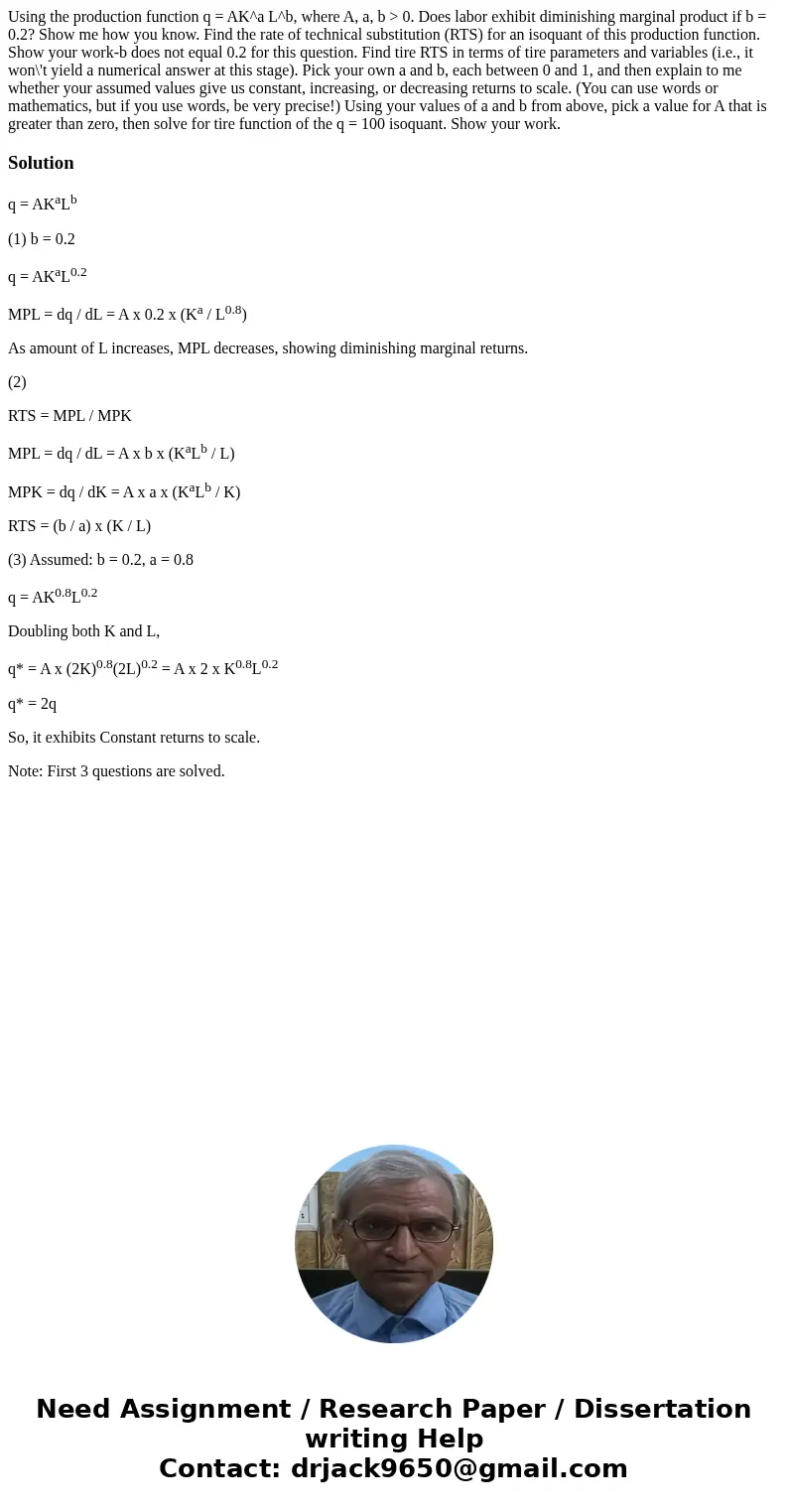Using the production function q AKa Lb where A a b 0 Does
Using the production function q = AK^a L^b, where A, a, b > 0. Does labor exhibit diminishing marginal product if b = 0.2? Show me how you know. Find the rate of technical substitution (RTS) for an isoquant of this production function. Show your work-b does not equal 0.2 for this question. Find tire RTS in terms of tire parameters and variables (i.e., it won\'t yield a numerical answer at this stage). Pick your own a and b, each between 0 and 1, and then explain to me whether your assumed values give us constant, increasing, or decreasing returns to scale. (You can use words or mathematics, but if you use words, be very precise!) Using your values of a and b from above, pick a value for A that is greater than zero, then solve for tire function of the q = 100 isoquant. Show your work.
Solution
q = AKaLb
(1) b = 0.2
q = AKaL0.2
MPL = dq / dL = A x 0.2 x (Ka / L0.8)
As amount of L increases, MPL decreases, showing diminishing marginal returns.
(2)
RTS = MPL / MPK
MPL = dq / dL = A x b x (KaLb / L)
MPK = dq / dK = A x a x (KaLb / K)
RTS = (b / a) x (K / L)
(3) Assumed: b = 0.2, a = 0.8
q = AK0.8L0.2
Doubling both K and L,
q* = A x (2K)0.8(2L)0.2 = A x 2 x K0.8L0.2
q* = 2q
So, it exhibits Constant returns to scale.
Note: First 3 questions are solved.

 Homework Sourse
Homework Sourse